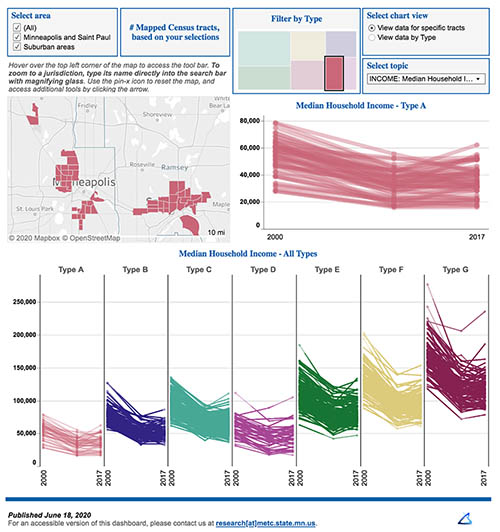 Suburban local governments in the Twin Cities metro have new resources to help them plan and program more effectively for the way their communities are changing.
Suburban local governments in the Twin Cities metro have new resources to help them plan and program more effectively for the way their communities are changing.
The Met Council has analyzed in detail the kinds of changes that suburban communities experienced between 2000 and 2017 in their demographics (age, income, and race), housing markets, and built environment (degrees and kinds of development). The analysis has revealed seven different types of change, which Council researchers describe in detail.
To complement the research, our Local Planning Assistance staff have developed a library of resources to address the distinct challenges and opportunities each type of change presents. The library provides tools to help address the needs arising out of the demographic, housing market, and built environment trends taking place in the suburban areas of the region.
“This analysis provides local planners with additional data they can use to develop more targeted strategies for addressing the types of change taking place in different parts of their communities,” said Baris Gumus-Dawes, Council researcher. “It also facilitates information-sharing across jurisdictions. Communities that are experiencing similar changes can talk with each other about strategies that work and don’t work.”
Mapping tool helps with visualizing the changes
In addition, the Council has launched a new interactive mapping tool that allows planners to look in more detail at the census tracts within their communities and visually identify other communities with census tracts that have been through similar changes. “The map is both a data extraction tool and a visualization tool,” said Gumus-Dawes.
“We don’t presume to know better than cities and townships what changes they are experiencing,” said Gumus-Dawes. “But we think the resources we are providing from across the region and the country will be very useful to local governments, particularly those with smaller staffs or newer planners.”
Council staff engaged on many occasions with cities, counties, developers, nonprofits, and research organizations in the course of doing the analysis and developing the resources and mapping tool over the last two years.
“Counties are quite excited about this tool because it can assist them in figuring out where service needs are,” said Gumus-Dawes. “Or a city with changing demographics may adjust their programs and facilities to meet the changing needs and preferences of their residents.”
View the interactive tool and the library of resources